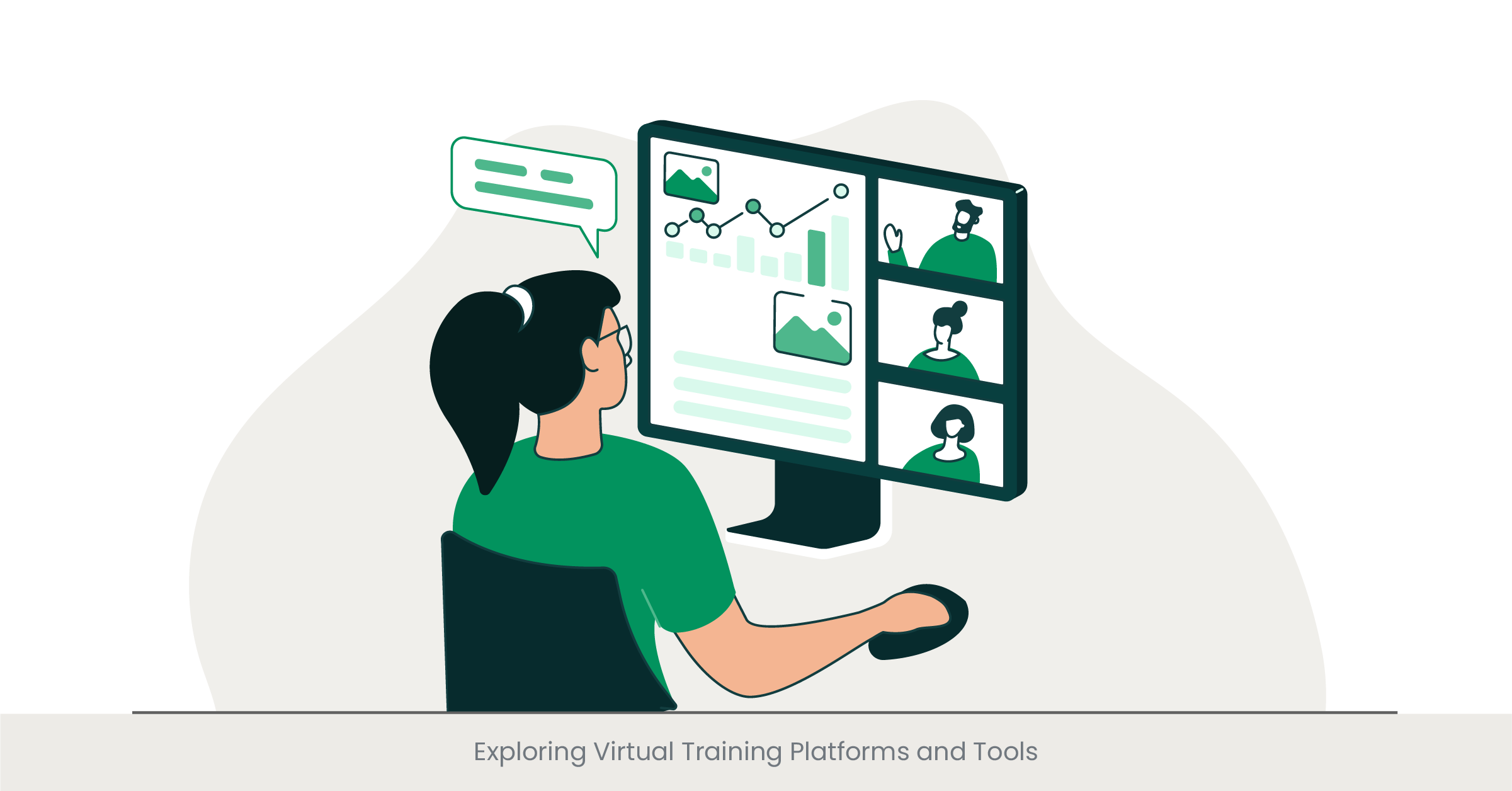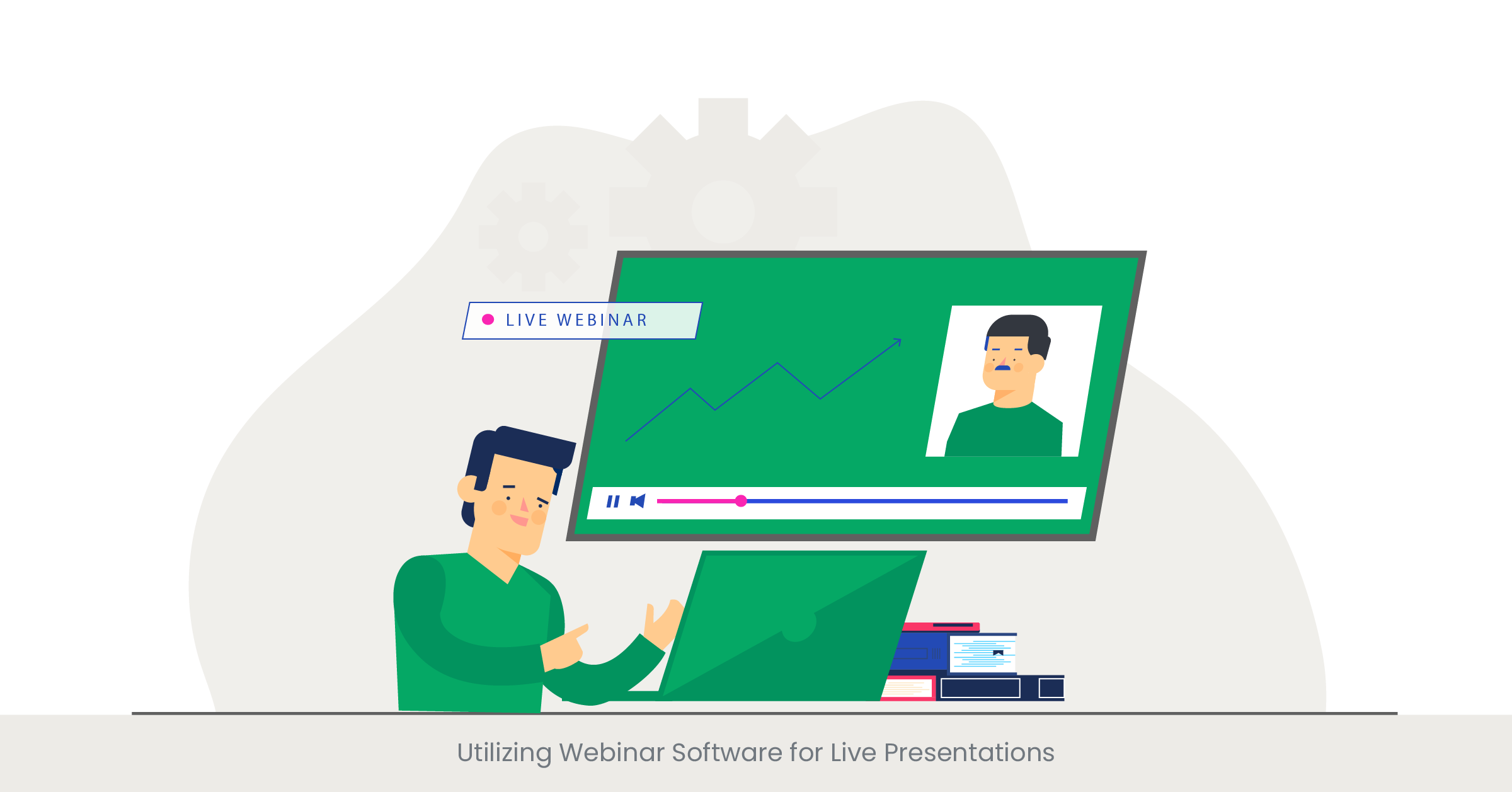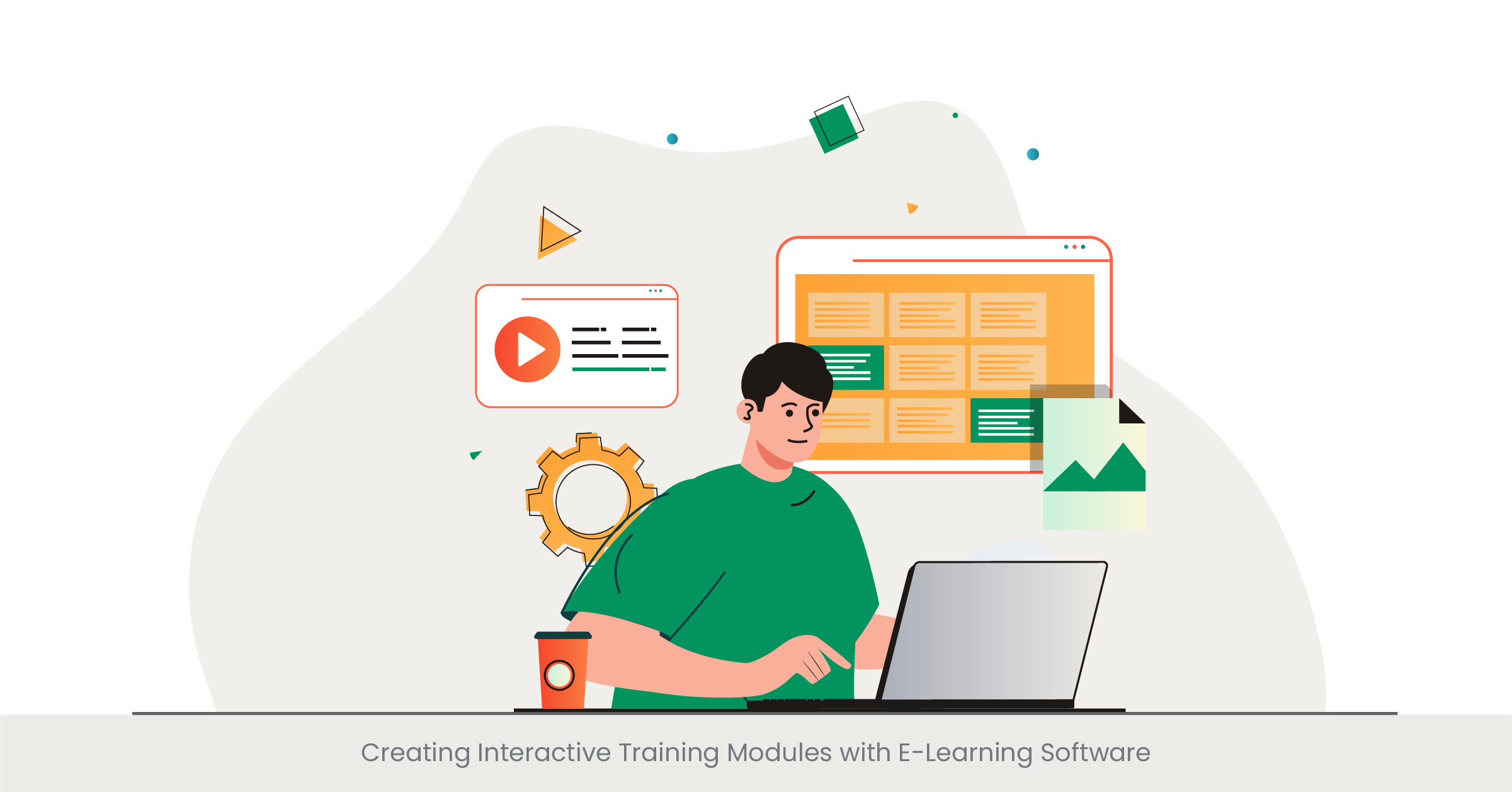
Exploring Virtual Training Platforms and Tools

Introduction to Virtual Training Platforms
Virtual training platforms and tools have revolutionized the way educational and professional training is delivered. These platforms provide a dynamic environment where users can engage in learning activities without the geographical constraints of traditional classrooms. For organizations and individuals focusing on enhancing presentation skills, these tools offer a flexible and scalable approach to developing essential competencies.
Background on Virtual Training Technology
The evolution of virtual training platforms began with simple video conferencing solutions and has expanded to sophisticated systems that integrate interactive elements like quizzes, real-time collaboration, and multimedia presentations. The development of these platforms was driven by the need for more accessible and cost-effective training solutions, allowing users from around the world to participate in educational programs, including presentation skills training courses.
Real-World Applications and Examples
Today, virtual training platforms are used across various sectors for a multitude of training purposes. For example, a global company might use webinar software to conduct live presentation skills seminars, enabling its international workforce to improve their public speaking and presentation design abilities simultaneously. These platforms often include features like breakout rooms and polling, which facilitate interactive and engaging presentations.
References and External Validation
Studies and reports highlight the effectiveness of virtual training tools. According to a survey by the Global Education Technology Association, companies that implemented virtual training platforms saw a 40% increase in productivity among employees undergoing skills training. This statistic underscores the transformative potential of virtual training environments in professional development, particularly in enhancing presentation skills.
Understanding the Benefits of Virtual Training Environments

Introduction to Virtual Training Environments
Virtual training environments offer a range of benefits that make them an ideal choice for individuals and organizations aiming to enhance their presentation skills. These environments are designed to replicate traditional learning settings while adding the unique advantages of digital technology, providing an accessible, flexible, and comprehensive training solution.
Background on the Advantages of Virtual Training
The shift towards virtual training environments has been fueled by advances in technology and changing global work dynamics. These platforms are not only cost-effective but also provide a level of flexibility that traditional in-person training cannot match. They allow learners to access materials and participate in training sessions from anywhere, anytime, which is especially beneficial for those with tight schedules or remote work arrangements.
Real-World Applications and Examples
Virtual training environments are particularly beneficial in fields that require frequent updates in knowledge and skills, such as public speaking and presentation. For instance, a professional development program may use online presentation training platforms to offer courses on the latest presentation techniques and software, like PowerPoint and Google Slides. Participants can interact in real-time, share feedback, and even modify content on-the-fly to better meet their learning needs.
References and External Validation
Research supports the benefits of virtual training environments. A study by the Online Learning Consortium found that participants in virtual training programs, especially those focused on presentation skills, reported higher levels of satisfaction and better retention of information compared to traditional face-to-face training sessions. This is attributed to the interactive and user-friendly nature of virtual platforms which enhances the learning experience.
Utilizing Webinar Software for Live Presentations

Introduction to Webinar Software
Webinar software has become an indispensable tool for conducting live presentations, especially in scenarios where interactive and engaging communication is required. These platforms enable presenters to reach large audiences worldwide without the need for physical presence, which is particularly advantageous for companies and educators looking to extend their reach and impact.
Background on Webinar Technology
The development of webinar technology has been driven by the demand for more interactive online communication tools. Unlike traditional video conferencing, webinar software is specifically designed for large audiences, with features such as Q&A sessions, polls, and hand-raising, which mimic the interactive elements of in-person seminars. This makes it an ideal platform for delivering effective presentation skills training and engaging presentations.
Real-World Applications and Examples
For example, many organizations use webinar software to host virtual presentations that allow for real-time interaction between speakers and the audience. A typical scenario might involve a company conducting a live training session on effective presentation skills, where participants can immediately apply what they've learned by delivering mini-presentations via the platform. These sessions often include features like live feedback and peer reviews, enhancing the learning experience.
References and External Validation
Studies show that webinar software can significantly enhance the effectiveness of presentations and training sessions. Research published in the Journal of Digital Learning indicates that participants in webinars are more likely to engage actively and retain information, thanks to the interactive capabilities of these platforms. Further, webinars are noted for their ability to cater to diverse learning styles, from visual learners who benefit from multimedia presentations to auditory learners who gain more from live discussions.
Creating Interactive Training Modules with E-Learning Software

Introduction to E-Learning Software
E-learning software plays a crucial role in the design and implementation of interactive training modules, facilitating dynamic and engaging educational experiences. These platforms enable the creation of customized learning paths that are not only informative but also interactive, making them ideal for developing and enhancing presentation skills among learners.
Background on E-Learning Development
The evolution of e-learning software from simple static courses to highly interactive modules reflects the growing emphasis on active learning in professional development. These tools allow for the incorporation of various multimedia elements such as videos, quizzes, and simulations, which are essential for a comprehensive understanding of complex subjects like public speaking and presentation design.
Real-World Applications and Examples
For instance, a company might use e-learning software to create a series of modules focused on effective presentation skills. These modules could include video tutorials on persuasive speaking, interactive quizzes to test understanding of key concepts, and simulation exercises that allow learners to practice and refine their presentation techniques in a virtual environment. Such practical applications ensure that learners not only absorb theoretical knowledge but also apply it in realistic scenarios.
References and External Validation
The effectiveness of interactive e-learning modules is supported by numerous studies. Research from the Educational Technology Research Institute indicates that interactive training environments can increase learner engagement and retention rates by up to 60%. These findings highlight the significant impact that well-designed e-learning modules can have on the development of essential skills, such as presentation and public speaking.
Incorporating Virtual Reality (VR) and Augmented Reality (AR) for Immersive Learning

Introduction to VR and AR in Learning
Virtual Reality (VR) and Augmented Reality (AR) are transforming the landscape of educational technology by providing immersive learning experiences that go beyond traditional training methods. These technologies offer interactive environments where learners can practice presentation skills in a simulated yet realistic setting, enhancing both engagement and retention.
Background on VR and AR Technologies
VR immerses users in a completely virtual environment, while AR enhances the real world by overlaying digital information onto it. Both technologies have been increasingly integrated into training programs to simulate real-life scenarios and complex task environments. This is particularly useful in fields like public speaking and presentation, where the ability to practice in lifelike settings can significantly improve performance.
Real-World Applications and Examples
For example, a training module might use VR to place a learner in a virtual conference room with an audience, challenging them to deliver a presentation. The immersive aspect of VR allows the participant to experience the pressure and dynamics of speaking in front of an audience, including handling distractions, managing anxiety, and engaging listeners. Similarly, AR can be used to project audience reactions and feedback in real-time, helping speakers adapt their methods and improve their communication skills.
References and External Validation
Studies have shown that VR and AR can dramatically enhance the learning experience. According to a report by the Immersive Learning Research Network, learners using VR for presentation training improved their public speaking skills by up to 30% more effectively than those using traditional methods. Additionally, AR has been shown to help learners better retain information and apply learning in practical settings, making it an invaluable tool for training programs focused on effective presentation skills.
Ensuring Accessibility and Inclusivity in Virtual Training

Introduction to Accessibility and Inclusivity
Accessibility and inclusivity are critical components of effective virtual training programs. Ensuring that these programs are accessible to all learners, regardless of their physical abilities or technological limitations, is essential for creating an equitable learning environment. This commitment enhances the overall effectiveness of training programs, particularly in developing presentation skills across diverse groups.
Background on the Importance of Accessible Training
In the context of virtual training, accessibility involves providing learners with various means to engage with content, including captioning, audio descriptions, and adaptable user interfaces that cater to different disabilities. Inclusivity extends beyond accessibility, requiring content and delivery methods that are culturally sensitive and appropriate for a diverse audience, thereby promoting broader participation.
Real-World Applications and Examples
For instance, a virtual presentation skills seminar can incorporate real-time captioning and sign language interpretation to accommodate participants with hearing impairments. Similarly, course materials could be offered in multiple formats (text, video, audio) to ensure they are accessible to individuals with visual impairments or learning disabilities. Such measures not only comply with legal standards but also ensure that all participants have equal opportunities to develop their presentation and public speaking skills.
References and External Validation
The significance of accessible and inclusive virtual training is underscored by numerous studies. Research published in the Journal of Inclusive Education shows that training programs designed with accessibility in mind see higher engagement rates and satisfaction among participants. Moreover, these programs are more likely to result in successful skill acquisition, as they accommodate a wider range of learning styles and needs.
Facilitating Remote Collaboration and Group Activities

Introduction to Remote Collaboration
Remote collaboration and group activities are pivotal for enhancing engagement and interactivity in virtual training sessions. These elements are particularly important in presentation skills training, where the dynamic exchange of ideas and feedback plays a crucial role in learning. Facilitating effective collaboration remotely requires tools and strategies that replicate the interactive nature of in-person workshops.
Background on the Importance of Collaboration in Learning
Collaboration in learning environments helps in building communication skills, fostering team dynamics, and enhancing problem-solving abilities. In virtual settings, this involves leveraging technology to create a seamless interaction space where participants can work together despite physical distances. This approach is essential for cultivating a comprehensive learning experience that promotes active participation and practical application of presentation skills.
Real-World Applications and Examples
For example, a company might use cloud-based platforms like Google Slides or Microsoft PowerPoint online to allow multiple participants to work on a presentation simultaneously. During a virtual workshop, participants could be tasked with co-creating a presentation, discussing each slide's content in real-time, and then delivering their collective work to the group. Such activities not only improve presentation skills but also enhance remote teamwork and digital fluency.
References and External Validation
The effectiveness of remote collaboration tools in learning environments is well-documented. According to a study in the International Journal of E-Learning and Distance Education, groups that utilized interactive tools for collaborative projects reported a more positive learning experience and higher achievement levels compared to those who didn’t. These findings highlight the importance of integrating effective collaboration technologies in virtual presentation training programs.
Leveraging Cloud-Based Platforms for Content Management

Introduction to Cloud-Based Platforms
Cloud-based platforms have become essential tools for content management in virtual training environments, especially for courses aimed at improving presentation skills. These platforms provide a centralized, accessible location for storing, managing, and sharing training materials, which can significantly enhance the efficiency and effectiveness of learning programs.
Background on Cloud-Based Content Management
The adoption of cloud technology in education and training has accelerated due to its scalability, reliability, and ease of access. These platforms allow trainers and learners to upload, edit, and distribute course materials without the limitations of physical media or the need for extensive IT infrastructure. This flexibility is particularly beneficial for presentation skills training, where dynamic content and frequent updates are common.
Real-World Applications and Examples
For instance, an organization might use a cloud-based platform like Google Drive or Microsoft OneDrive to host a series of interactive presentation skills training modules. These modules could include PowerPoint presentations, video recordings, and supplementary reading materials. Participants can access and interact with these resources at any time, from any location, facilitating ongoing learning and collaboration. Moreover, trainers can easily update materials and provide instant feedback, ensuring that content remains current and relevant.
References and External Validation
Studies highlight the advantages of using cloud-based platforms for content management in training settings. Research from the Journal of Cloud Computing in Education shows that organizations utilizing these platforms report a 50% reduction in the time spent managing course materials, along with improved participant engagement and content retention. These platforms not only streamline administrative processes but also enhance the learning experience by making resources more readily available and interactive.
Integrating Video Conferencing for Real-Time Interaction

Introduction to Video Conferencing
Video conferencing has become a cornerstone of modern virtual training environments, particularly for presentation skills development. This technology enables real-time interaction between trainers and participants, mimicking the immediacy and personal engagement of traditional in-person sessions but with the added flexibility of remote access.
Background on Video Conferencing
The rise of video conferencing technology was propelled by the need for more interactive and personal communication in remote settings. It has evolved from simple video calls to sophisticated systems capable of supporting large groups with features like screen sharing, virtual whiteboards, and breakout rooms. These capabilities make it an ideal tool for conducting effective presentation training sessions online.
Real-World Applications and Examples
For instance, a virtual presentation skills workshop might use video conferencing to facilitate live speaking practices, allowing participants to deliver presentations to an online audience. Tools like Zoom or Microsoft Teams enable participants to share their screens, use digital pointers, and even record their sessions for later review. This setup not only allows for immediate feedback from instructors and peers but also helps participants learn to manage and utilize technology as part of their presentation strategy.
References and External Validation
The impact of video conferencing on learning and training effectiveness is well-supported by data. A study in the International Review of Research in Open and Distributed Learning found that video conferencing, when used for training, can enhance participants' engagement and retention of material, particularly in courses requiring high levels of interaction such as presentation skills training. Participants reported feeling more connected to the content and more confident in their presentation abilities.
Adapting Training Materials for Various Digital Devices

Introduction to Adapting Training Materials
Adapting training materials for various digital devices is essential in today’s diverse technological landscape. This ensures that all participants, regardless of the device they use—be it smartphones, tablets, laptops, or desktops—can access and effectively engage with the training content. Such adaptability is particularly critical for virtual presentation skills training, where accessibility can directly influence the effectiveness of the learning experience.
Background on Device Compatibility
The need for device compatibility in educational materials has grown with the proliferation of mobile and other handheld devices. Training programs must now consider multiple formats and screen sizes to ensure that materials are not only accessible but also optimized for different viewing experiences. This includes responsive design principles that adapt content dynamically to the device being used, providing an optimal user experience.
Real-World Applications and Examples
For instance, a virtual presentation skills course might offer materials that are equally accessible on a mobile app and a web-based platform. This could involve redesigning slides and other visual elements to be easily viewable on smaller screens or incorporating interactive elements that are touch-friendly for tablet users. Such considerations help ensure that learners can engage with the material effectively, whether they are on the go or in a more traditional office setting.
References and External Validation
Studies on digital learning adaptation confirm the benefits of multi-device training materials. Research published in the Journal of e-Learning and Digital Media found that courses designed with multi-device accessibility saw increased completion rates and higher satisfaction among participants, compared to those that did not consider device diversity. This underscores the importance of creating versatile, user-friendly training environments that accommodate the varied needs of learners.
Frequently Asked Questions
What are the 5 P's of presentation skills?
The 5 P's of presentation skills are Planning, Preparation, Practice, Performance, and Post-Evaluation. These steps help individuals develop and deliver effective presentations by organizing content, rehearsing, executing, and reflecting on feedback.
What are the 4 types of presentation skills?
The four main types of presentation skills include verbal communication (how you say it), non-verbal communication (what your body language says), visual aids (using tools like PowerPoint effectively), and handling Q&A sessions (engaging with the audience).
What is presentation skill training?
Presentation skill training involves educational sessions designed to enhance an individual’s ability to effectively convey information to an audience. These trainings focus on improving public speaking, the use of visual aids, body language, and audience interaction techniques.
How do you give a good seminar presentation?
To give a good seminar presentation, start by thoroughly understanding your topic and audience. Structure your content clearly, use engaging visuals, practice your delivery, engage with the audience through questions, and be prepared to handle feedback and queries confidently.
Which course is best for presentation skills?
The best course for presentation skills typically offers a comprehensive curriculum that includes public speaking, use of technology (like PowerPoint or Google Slides), audience analysis, and practical exercises. Look for courses that provide interactive opportunities and personalized feedback.
How do you train for a presentation?
Training for a presentation involves several key activities: researching and organizing your content, practicing your delivery in front of a mirror or with a small audience, using technology to enhance your message, and seeking feedback to refine your approach.
How can I practice my presentation?
You can practice your presentation by rehearsing in front of friends or colleagues, recording yourself and reviewing the playback, adjusting based on feedback, and practicing with all the technical aids and equipment you will use during the actual presentation.
How can I learn to make a presentation?
Learning to make a presentation effectively involves understanding the basics of good communication, studying presentation design (like creating compelling PowerPoint slides), practicing speaking skills, and continuously seeking feedback to improve.
What tools are essential for virtual presentations?
Essential tools for virtual presentations include video conferencing software (like Zoom or Teams), presentation software (such as PowerPoint or Google Slides), tools for audience interaction (polls, Q&A tools), and reliable internet connectivity.
How does virtual training enhance presentation skills?
Virtual training enhances presentation skills by providing a platform for practicing in a realistic yet controlled environment, offering immediate feedback, allowing for repeated practice sessions, and exposing presenters to a variety of digital tools that can make their presentations more engaging.



%20(1).jpg)
%20(1).jpg)


